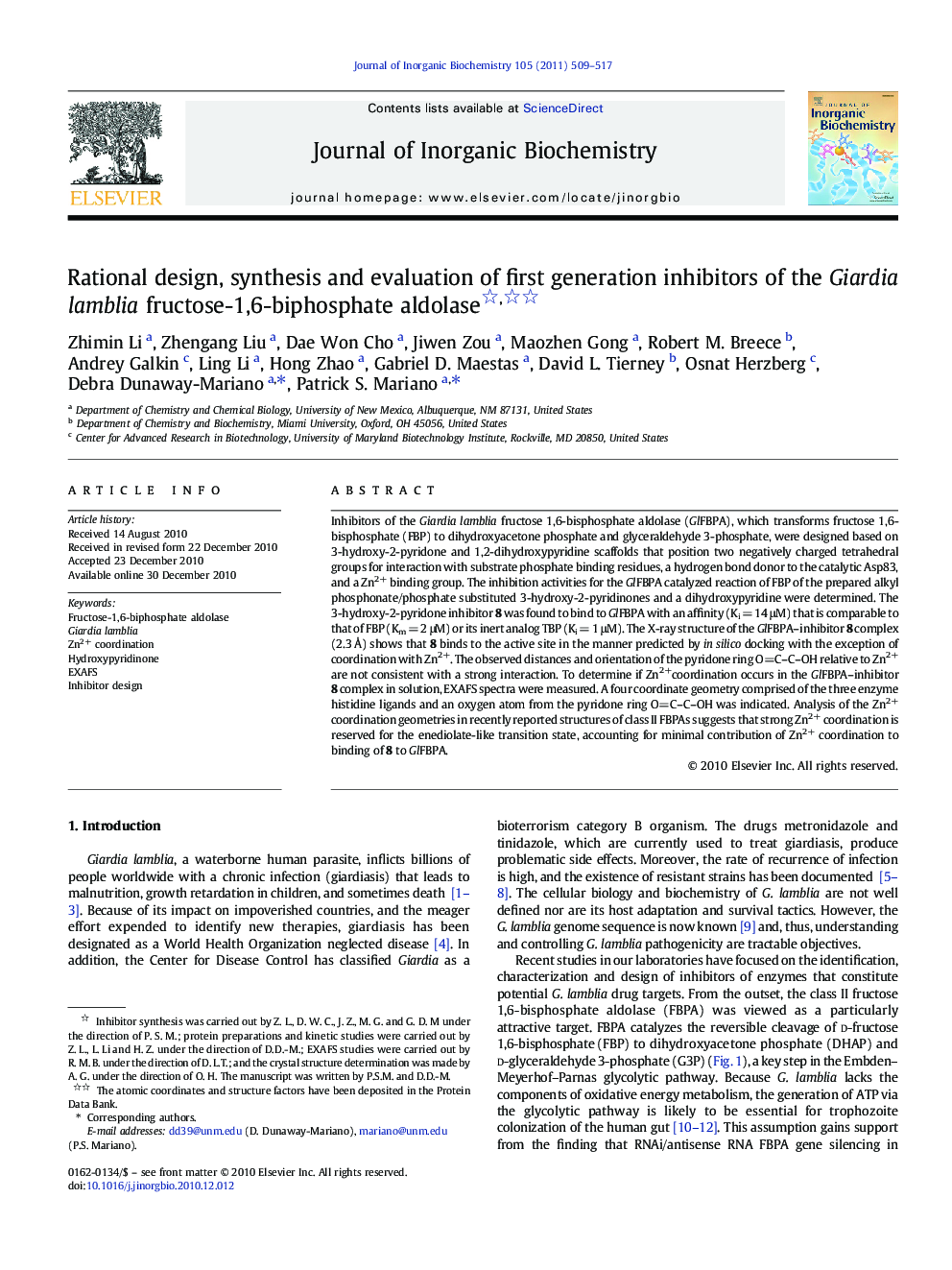| Article ID | Journal | Published Year | Pages | File Type |
|---|---|---|---|---|
| 1317044 | Journal of Inorganic Biochemistry | 2011 | 9 Pages |
Inhibitors of the Giardia lamblia fructose 1,6-bisphosphate aldolase (GlFBPA), which transforms fructose 1,6-bisphosphate (FBP) to dihydroxyacetone phosphate and glyceraldehyde 3-phosphate, were designed based on 3-hydroxy-2-pyridone and 1,2-dihydroxypyridine scaffolds that position two negatively charged tetrahedral groups for interaction with substrate phosphate binding residues, a hydrogen bond donor to the catalytic Asp83, and a Zn2+ binding group. The inhibition activities for the GlFBPA catalyzed reaction of FBP of the prepared alkyl phosphonate/phosphate substituted 3-hydroxy-2-pyridinones and a dihydroxypyridine were determined. The 3-hydroxy-2-pyridone inhibitor 8 was found to bind to GlFBPA with an affinity (Ki = 14 μM) that is comparable to that of FBP (Km = 2 μM) or its inert analog TBP (Ki = 1 μM). The X-ray structure of the GlFBPA–inhibitor 8 complex (2.3 Å) shows that 8 binds to the active site in the manner predicted by in silico docking with the exception of coordination with Zn2+. The observed distances and orientation of the pyridone ring O=C–C–OH relative to Zn2+ are not consistent with a strong interaction. To determine if Zn2+coordination occurs in the GlFBPA–inhibitor 8 complex in solution, EXAFS spectra were measured. A four coordinate geometry comprised of the three enzyme histidine ligands and an oxygen atom from the pyridone ring O=C–C–OH was indicated. Analysis of the Zn2+ coordination geometries in recently reported structures of class II FBPAs suggests that strong Zn2+ coordination is reserved for the enediolate-like transition state, accounting for minimal contribution of Zn2+ coordination to binding of 8 to GlFBPA.
Graphical AbstractStereoviews of the active site of the complex between 3-hydroxy-2-pyridone inhibitor 8 and GlFBPA as determined by X-ray crystallography.Figure optionsDownload full-size imageDownload as PowerPoint slide
